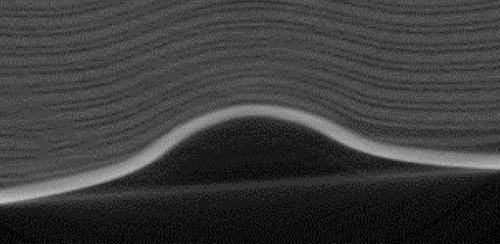October 4, 2013

A fire in a Tesla Model S electric sedan has once again placed a spotlight on the issue of lithium-ion battery safety.
The incident, captured on a now-viral video (watch it below), occurred after the vehicle rolled down an off-ramp in a suburban area between Seattle and Tacoma, Wash. Soon after it stopped and the driver exited, the car's front end was engulfed in flames.
In a statement emailed to Design News, Tesla wrote:
The fire was caused by the direct impact of a large metallic object to one of the 16 modules within the Model S battery pack. Because each module of the battery pack is, by design, isolated by fire barriers to limit any potential damage, the fire in the battery pack was contained to a small section in the front of the vehicle.

A fire incident report from the Regional Fire Authority of Kent, Wash., stated that firefighters appeared to have extinguished the fire, only to have it restart underneath the Model S, in the area of the battery. Applying water through puncture holes, the report said, only "seemed to intensify the activity." Firefighters ultimately doused the flames after dismantling the front end of the vehicle, cutting an access hole with a circular saw, and applying a "dry chemical agent," the report said.
"The vehicle's driver stated that he had struck some kind of object on the freeway," the report added. "He stated that he then began to have problems with the vehicle and pulled off the freeway."
Battery experts told Design News that it's hard to say exactly what happened until more details are available. "It could be an indentation or it could be a puncture incident where you have physical breaching of the battery pack," Ken Boyce, Underwriter Laboratories'principal engineering manager for energy, told Design News. "Depending on what actually happened, there could be a number of failure mechanisms."
The fact that the battery pack was struck by a metal object raises the possibility of internal shorts, experts told us. "I find it disturbing that they had the fire," Ralph Brodd, a well-known lithium battery expert and founder of the consultancy, Broddarp of Nevada, told us. "It tells you that their case may not have been sturdy enough."
Mechanical deformation of a battery's casing can be particularly problematic for high-energy lithium-ion batteries, experts said. "In a lithium-ion battery, you've got electrodes that are tens of microns from one another," Elton Cairns, a professor of chemical and biomolecular engineering at the University of California-Berkeley said during a 2011 discussion with Design News. "If you deform the cell case and it causes the electrodes to touch one another, there's an internal short circuit. That can cause the cell to rapidly discharge and, in so doing, heat up."
Such occurrences are rare, however. A Tesla spokeswoman told Design News that the Model S has collectively been driven 83 million miles at this point, with dozens of known accidents, and no such battery problems, until now.
Lithium-ion batteries have recently grabbed headlines after notable overheating incidents caused by short-circuiting. In the Boeing 787, the cause of the short circuiting was never pinned down. In the highly publicized Chevy Volt incident of 2011, the fire was determined to have occurred when coolant came in contact with a printed circuit board during government tests. GM subsequently beefed up the Volt with structural enhancements, emphasizing that the changes had nothing to do with the battery itself, which engineers described as safe.
"This is the challenge with these battery packs," said Boyce of UL. "You have a lot of energy condensed into a very small footprint. That's why you use it, but it's also what makes it so challenging."
Warning: This video contains profanity. If you don't wish to hear it, please do not click on the video.
Related posts:
About the Author(s)
You May Also Like



